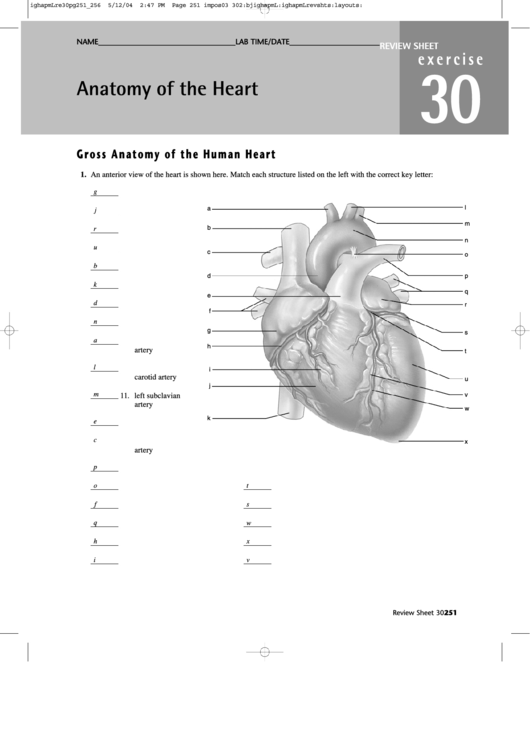Understanding the internal anatomy of the heart is crucial for learning about its functions. The heart is a vital organ that pumps blood throughout the body, delivering oxygen and nutrients to cells and removing waste products. The heart is divided into four chambers: two atria and two ventricles. The atria receive blood from the body and lungs, while the ventricles pump blood out to the body and lungs.
The heart also contains valves that control the flow of blood between the chambers. The tricuspid valve separates the right atrium from the right ventricle, while the mitral valve separates the left atrium from the left ventricle. The pulmonary valve regulates blood flow from the right ventricle to the lungs, and the aortic valve controls blood flow from the left ventricle to the rest of the body.
The Heart Internal Anatomy Worksheet
The Circulation of Blood
Understanding the circulation of blood through the heart is essential for comprehending how the cardiovascular system works. Blood enters the heart through the superior and inferior vena cava, which carry deoxygenated blood from the body to the right atrium. From the right atrium, blood flows through the tricuspid valve into the right ventricle, where it is pumped to the lungs through the pulmonary artery to pick up oxygen.
Oxygenated blood returns to the heart through the pulmonary veins, entering the left atrium. From the left atrium, blood flows through the mitral valve into the left ventricle, which pumps it out through the aortic valve to the rest of the body. This continuous cycle of blood flow ensures that all cells receive the oxygen and nutrients they need to function properly.
